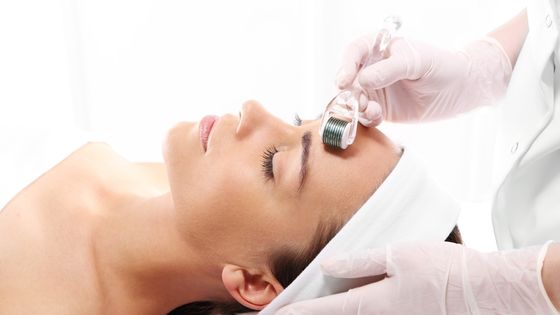Hair loss is a problem that affects millions of people around the world. And while there are many potential causes, from genetics to stress, the good news is that there are treatments available that can help. One such treatment is microneedling.


What Causes Hair Loss and Does Genetics Play a Role as well?
There are several factors that can trigger hair loss, including genetics, hormones, age, and scalp diseases. While genetics may play a role in hair loss, it’s not the only factor at work. Hormones, age, and scalp diseases can also contribute to hair loss.
How Hormones Cause Hair Loss
Hormones are one of the main causes of hair loss. When levels of certain hormones drop, it can cause the hair follicles to miniaturize, which leads to thinning hair and eventually hair loss. And while hormones can be the cause of hair loss in both men and women, it’s more common in women due to the hormonal changes that occur during menopause.
How Age Causes Hair Loss
Age is another factor that can contribute to hair loss. As we age, our hair follicles begin to miniaturize, which leads to thinner hair and eventually hair loss.
Scalp Diseases That Cause Hair Loss
There are several scalp diseases that can cause hair loss, including alopecia areata, psoriasis, and seborrheic dermatitis.
How Microneedling Can Help with Hair Loss
So what is microneedling? Put simply, it’s a process whereby very fine needles are used to create tiny punctures in the skin. This triggers the body’s natural healing process, which promotes the production of collagen and elastin. This might sound painful, but it’s actually relatively painless and can be done at home using a dermaroller. Microneedling can be used to treat a variety of conditions, including hair loss.
There are many benefits of microneedling for hair loss, including its ability to stimulate hair growth. But how does it do this? Well, by creating tiny punctures in the skin, microneedling encourages the production of collagen and elastin. These are both important for hair growth, as they help to keep the hair follicles healthy. While the exact mechanism is not fully understood, it’s thought that microneedling helps to stimulate the hair follicles, which leads to thicker, healthier hair. Additionally, microneedling can help to improve blood circulation to the scalp, which is important for hair growth.
Microneedling can also be used to treat other conditions that can cause hair loss, such as alopecia areata. This is an autoimmune condition that causes patchy hair loss, and there is some evidence to suggest that microneedling may help to stimulate hair growth in affected areas.
What Are the Benefits of Microneedling?
In addition to stimulating hair growth, microneedling offers a number of other benefits, including:
Reduced Fine Lines and Wrinkles
Microneedling can help to reduce the appearance of fine lines and wrinkles by stimulating the production of collagen and elastin. This is because collagen and elastin are important for maintaining the health of the skin. They help to keep the skin supple and elastic, which reduces the appearance of wrinkles and fine lines. Additionally, microneedling can help to improve blood circulation to the skin, which further supports healthy skin function.
Improved Skin Texture
Microneedling can also help to improve skin texture by making the skin smoother and softer.
Reduced Pore Size
Another benefit of microneedling is that it can help to reduce pore size. This is due to the fact that microneedling stimulates the production of collagen, which helps to fill in the pores.
Treatment of Acne Scars
Microneedling can also help to treat acne scars by stimulating the production of collagen. This is because collagen is important for repairing damaged skin, and it can help to fill in the acne scars. Additionally, microneedling can help to improve blood circulation to the skin, which further supports the healing process.
How Often Should You Do Microneedling?
Microneedling can be done once a week, but it’s important to start slowly and build up to this frequency. It’s also important to use a sterile needle and cleanse the skin before each treatment.
What Are the Side Effects of Microneedling?
While microneedling is generally safe, there are some potential side effects, including:
- Redness
- Swelling
- Bruising
- Itching
- Dryness
Conclusion
If you’re struggling with hair loss or thinning hair, microneedling could be worth considering. Although it is a relatively new treatment for hair loss, but initial studies suggest that it may be an effective option for stimulating hair growth. In addition, it’s a relatively simple and pain-free treatment that can be done at home, and it offers the potential to stimulate hair growth and improve hair quality.








